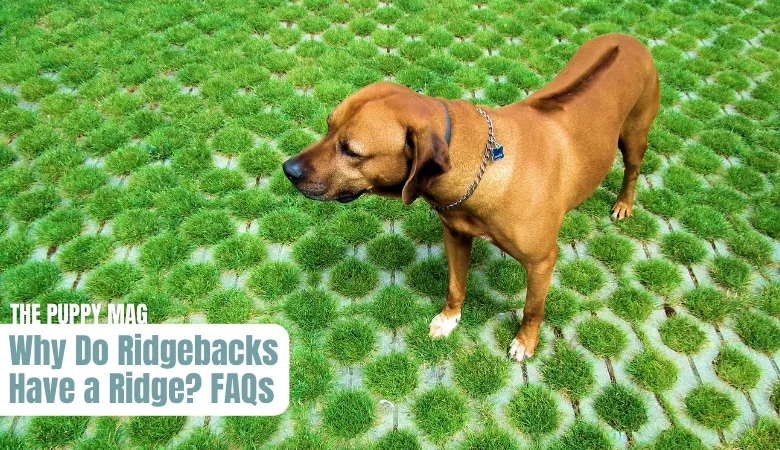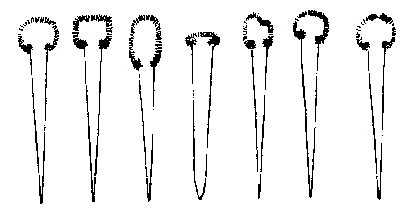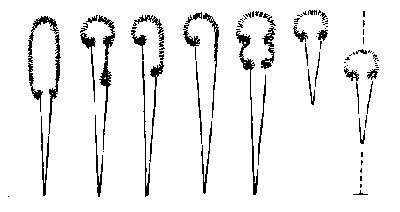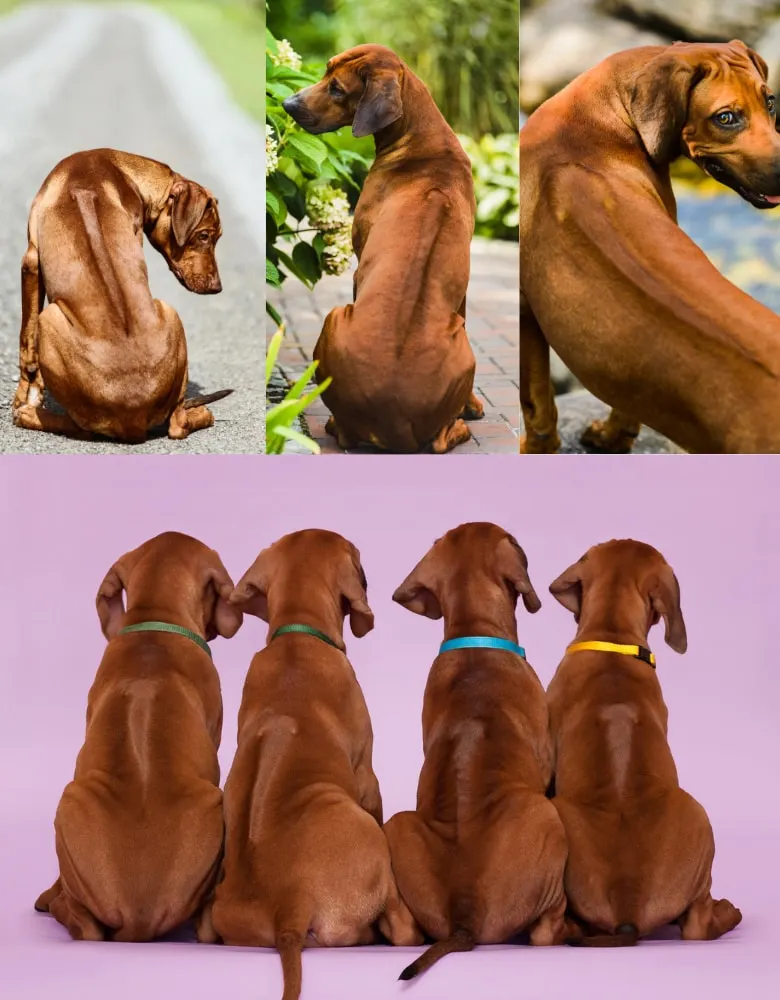The defining attribute that differentiates Rhodesian ridgebacks from nearly all other breeds is their notable “ridge”. As with any unusual trait, this provokes a variety of queries. This piece will delve into the reasons behind the ridgebacks’ famous ridge.

What Causes The Ridge In Rhodesian Ridgebacks?
As this trait is so unique, it didn’t take long before scientists carried out genetic research to find out the cause of the ridge! Here’s the answer:
The famous “ridge” in Rhodesian ridgebacks is caused by a genetic mutation. This mutation is responsible for causing duplicate copies of three growth factor genes. The excess copies of these three genes result in the stripe of backward growing hair on a ridgeback.
All dogs have the three “growth factor genes“, but only in a single copy, which results in no backward growing hair.
It’s the abnormal genetic mutation, that causes there to be multiple copies in Rhodesian Ridgebacks and also Thai Ridgebacks.
⭐ Please note: Further below I’m going to use the term “ridge gene” and this is not to be confused with the explanation above. The “ridge gene” is the encompassing term for ridgebacks that have the ridge.
Do All Rhodesian Ridgebacks Have a Ridge?
To the surprise of many owners, not all Rhodesian ridgebacks actually have a ridge. While most do, there are many ridgebacks, that do not have the ridge gene and are therefore ridgeless.
So why and how does this happen? I’ll keep it as simple as possible!
A ridgeback can have either one single copy of the “ridge gene” making them what’s known as heterozygous, or two copies of the ridge gene, making them homozygous.
As long as the ridgeback has one copy, he or she will have the ridge.
● Heterozygous – One copy
● Homozygous – Two copies
⭐ When ridgeback puppies will ALWAYS have the ridge:
A ridgeback that has two copies will always pass down the ridge gene (either one or two copies) to their offspring no matter what, regardless of the other parent. This is because the ridge gene is dominant. Either way, those puppies will have a ridge.
⭐ When ridgeback puppies MIGHT NOT have the ridge:
When single copied ridgebacks are bred together, that’s where the potential for a ridgeless ridgeback comes into play. Let’s look at the scenarios:
● There’s a 50% chance of each pup having a ridge (with one copy of the ridge gene)
● There’s a 25% chance of each pup having a ridge (with two copies)
● There’s a 25% chance of each pup not having a ridge
⭐ Common scenario explained: When a heterozygous (one copy) is bred with a homozygous (two copies), all puppies will have their ridge. But 50% of the offspring will inherit two copies, while the other 50% will inherit just one copy.
Are Rhodesian Ridgebacks Born With The Ridge?
Yes, If the ridgeback puppy has one or two copies of the ridge gene, he will have a noticeable ridge on his back right from when he’s born. It does not develop at a later stage.
If the puppy does not have the ridge gene, then there will be no ridge, and they won’t “grow one” as they get older.
This is something to be very careful of as some dishonest breeders trying to make a quick profit, have promised unknowing buyers that “the ridge will develop as they grow”. This is not true. A puppy ridgeback will either have the ridge right from birth or not at all.
Different Ridge Types & Standards
There are many different types of ridges, and believe it or not, the ridge has to meet certain criteria in order for the ridgeback to be of “show dog quality”.
While not having a “show-dog ridge” might be undesirable to some owners, it’s purely cosmetic and for many, it doesn’t matter. The shape of the ridge or the number of whirls doesn’t change a ridgeback’s ability to live a healthy and happy life.
“Correct” ridges:

Correct ridges will have exactly TWO small whirls of hair more or less opposite each other, with the ridge in the middle. These whirls must not be lower than one-third of the way down the length of the ridge (starting from the shoulder).
The ridge is allowed to have a circle or box shape at the top, as long as it starts right behind the shoulder extending down into a smooth point by the hip region.
“Incorrect” ridges:

Incorrect ridges are deemed to have either less or more than two whirls, OR two whirls that are not opposite each other.
If the total length of the ridge doesn’t extend down to the hip region this is also considered a fault, as too is having the “box” extend past down more than one-third of the total length of the ridge.
Those helpful images are from Ambernose
If your ridgeback doesn’t have a “show-dog ridge” it doesn’t mean he or she is any less of a ridgeback than those with show-dog ridges.
Does The Ridge Cause Complications? Dermoid Sinus?
The ridge itself does not cause any health complications, but unfortunately, the genetic mutation that causes the ridge is known to increase the chances of Dermoid Sinus.
According to UFAW (Universities Federation for Animal Welfare), Dermoid sinus is a developmental congenital abnormality that causes tubular indentation of the skin just above the spin.
These hollow tunnels (tubular indentation) can penetrate deep into the tissue below the ridge and are prone to infections.
Infections can either be very mild and last a few weeks, or even life-threatening. In unfortunate cases, Dermoid sinus can impact the central nervous system causing extreme pain, severe illness, and even death. Source
Unfortunately, those that suffer from Dermoid Sinus, about 8-10% of the breed population, will have to live with it. In drastic cases, surgery is an option to have the tunnels removed, although this doesn’t completely prevent the possibility of future infections.
While ridgeless ridgebacks do not suffer from this condition, there is no known movement to breed more ridgeless ridgebacks because of it, nor is there a specific effort to stop them from being bred either. If nature intended there to be some ridgeless ridgebacks it seems fine for them to exist in the gene pool. (just my opinion).
Images of a Rhodesian Ridgeback’s Ridge


⭐ Thank you for reading! Back to more Rhodesian Ridgeback articles >
